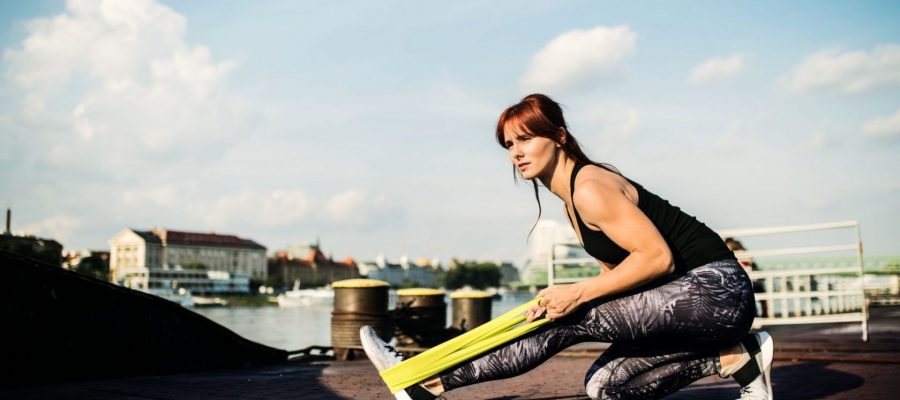Not all hip pain is the same – here’s how to ease discomfort and tightness depending on your type of hip problem.
Muscle and joint pain is becoming more and more common in our lives, with 25% of all GP appointments relating to this type of ailment, according to Highgate Hospital. And in the top three most complained about aches lies problems with our hips.
As with all health issues, there’s a difference between serious pain and injury and annoying discomfort. For those who are simply getting frustrated at tightness or niggles, there are simple solutions. But your hips covers a large area of muscles and ligaments, so we need to get more specific about how to look after them.
You may also like
Hip pain when running? You may need to strengthen your iliacus muscle
“The muscles and ligaments all attach in different areas which means you need to rehab them in different ways,” agrees osteopath Anisha Joshi. Here, we’ve broken down the ways to improve your hip pain depending on the type of discomfort you’re feeling.
Pain and tightness at the front of the hip
“If there’s hip pain at the front, it’s probably stemming from your hip flexor muscles called the psoas,” says Joshi.
The reason these areas can get so tight is down to our lifestyle, says personal trainer Nancy Best: “The majority of my clients sit for long hours at a desk, which, over time, causes a shortening of the iliopsoas. Our bodies are built for movement, but modern life is predominantly sedentary, and often involves sitting in poor posture.”
The answer isn’t always stretching – which feels good, but does little to relieve the fact that these muscles are underused. “Often stretching can cause more irritation in the hip joint itself so when you’re dealing with anterior hip pain you should focus on strengthening,” explains Joshi. She tells clients to do banded marches to strengthen the area.

Hip flexor march
- While standing, place a short resistance band around your feet so it sits under the balls of your feet.
- Place your hands on your hips or hold onto a wall while you lift one foot off the ground in a marching position.
- Try to bring your thigh to parallel with the floor, driving through the hip rather than swinging the leg.
- Slowly lower back to the starting position.
- Repeat 10 reps on each side.
You may also like
5 benefits of using resistance bands for building strength
Pain and tightness at the side of the hip
The British Medical Journal recently issued a statement saying that “Lateral hip pain […] has certainly become more prevalent during and after ‘lockdown’ as patients shift towards different exercise modalities or cease being physically active”.
They explain that it’s often down to gluteal tendinopathy – that is a weakening of the tendons around the glutes – which leaves people prone to injury. That’s why Joshi again suggests strengthening exercises to help with pain at the side of their hips.
“I tell clients to strengthen their glutes with isolation moves like glute bridge and clams, but make sure they’re slow and controlled to engage the muscles,” says Joshi.
Glute bridges
Poor hip mobility
If you’re struggling to get lower in a squat or move through lateral lunges, a lack of hip mobility might be the problem. This doesn’t only impact your performance, which in turn can hinder your strength goals, but can also lead to injury if your limitations compromise your form.
To help people figure out what’s causing the mobility problems, physical therapist and strength coach Dr Aaron Horschig shared a recent Instagram Reel on the Squat University page. In it, he says that he’s often asked for the best hip mobility exercises, and the answer is always that ‘it depends’.
He shared two simple tests which can help you work out if the problem is internal or external rotation – and how to improve both of these limitations.
1. Knee to chest stretch
Start by lying on the floor with your legs extended in front of you and pull one knee into your chest by bending the leg. If you feel a pinch on one side that limits your motion, Dr Horschig says the problem might be with the internal rotation of the hip.
To improve internal rotation, you can use a resistance band like he does in the video above, looping it around your knee to pull your leg out as you work against it to pull your leg in.
“I recommend a simple 90/90 mobility stretch to improve internal rotation,” says Joshi.
90/90
2. Faber test
Dr Horschig says that this test will highlight any imbalances in external rotation – that is how the hip turns outwards, a movement powered by the muscles around your outer hip.
To do it, lie on your back and bring one ankle to the other knee and allow the leg to fall out wide. If one side can’t open as wide as the other, or you struggle with tightness or pain on both sides of the hip, he suggests a pelvis-opening hip airplane before exercising.
Hip airplane
- Stand tall and brace your core. Slowly lift one leg off the floor and tilt your body forwards, maintaining a straight back, to a stance that feels challenging but where you can still hold your balance.
- Rotate your torso in towards your standing leg, through internal rotation, then twist it away through external rotation.
- Try 20 reps on each side.
Images: Getty
Source: Read Full Article
